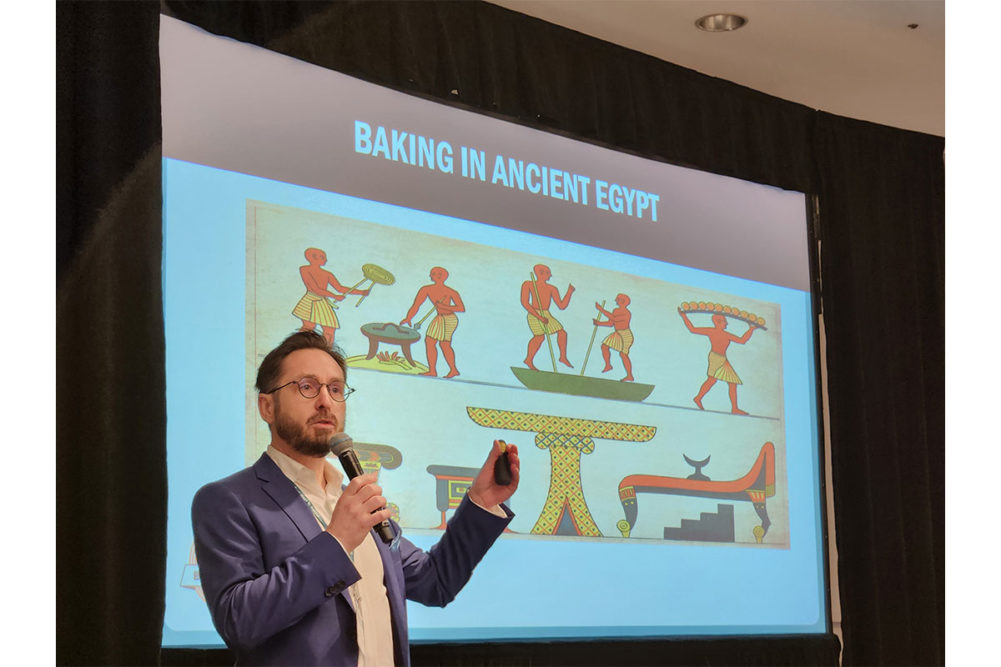CHICAGO — Innovative products, efficient manufacturing and efforts to increase volume remain factors in bread-making. It’s been that way since ancient times, as Richard Charpentier, chief executive officer of Baking Innovation, explained Feb. 28 in Chicago at the American Society of Baking’s BakingTech 2024.
The ancient Egyptians used animals to plow, increasing the production of agricultural goods, including grains. Fermentation turned barley into beer. Yeast was discovered.
“They had no clue what yeast was all about, but they knew it worked,” Charpentier said.
The two grain staples in bread-making became barley and emmer while einkorn, spelt, sorghum and millet also worked. Each peasant received three daily loaves of bread, which counted as both a food source and currency that could be traded.
The Greeks contributed to bread’s history by inventing the front-loading oven, increasing efficiency and throughput. About 70 styles of bread became available as the Greeks made sourdough bread, like the Egyptians, and used honey as an ingredient. The Romans then invented the water mill. Their brick ovens produced high volumes of bread. Temples were dedicated to bakers.
“The entire empire grew rapidly due to bread,” Charpentier said.
In the Middle Ages, countries implemented laws. England in 1266 put the assize bread laws in place that assured customers received low-priced, good-quality bread. When bakers broke the law, they were fined and sometimes whipped. In 1670, a new law in France allowed bakers to use a new yeast called levain, which especially assisted bakers in cold months. Salt became a way to extend shelf life.
Alfred Bird, a chemist, in 1843 developed the first version of baking powder, an alternative to yeast that revolutionized baking at home since bread could be made in two hours. The retail side of baking received a boost in 1928 through a bread-slicing machine invented by Otto Frederick Rohwedder, a member of the ASB’s Baking Hall of Fame,
History has linked brewing and baking since the creation of bread, and Charpentier said he thinks baking now could take a cue from brewing. In the 1980s craft brewers gained in popularity. Consumers today may enter a drinking establishment and order craft beers, say a triple-chocolate hop, Charpentier said.
“Why not bread?” he said.
Bakers could use different grains and baking techniques to create craft bread.



